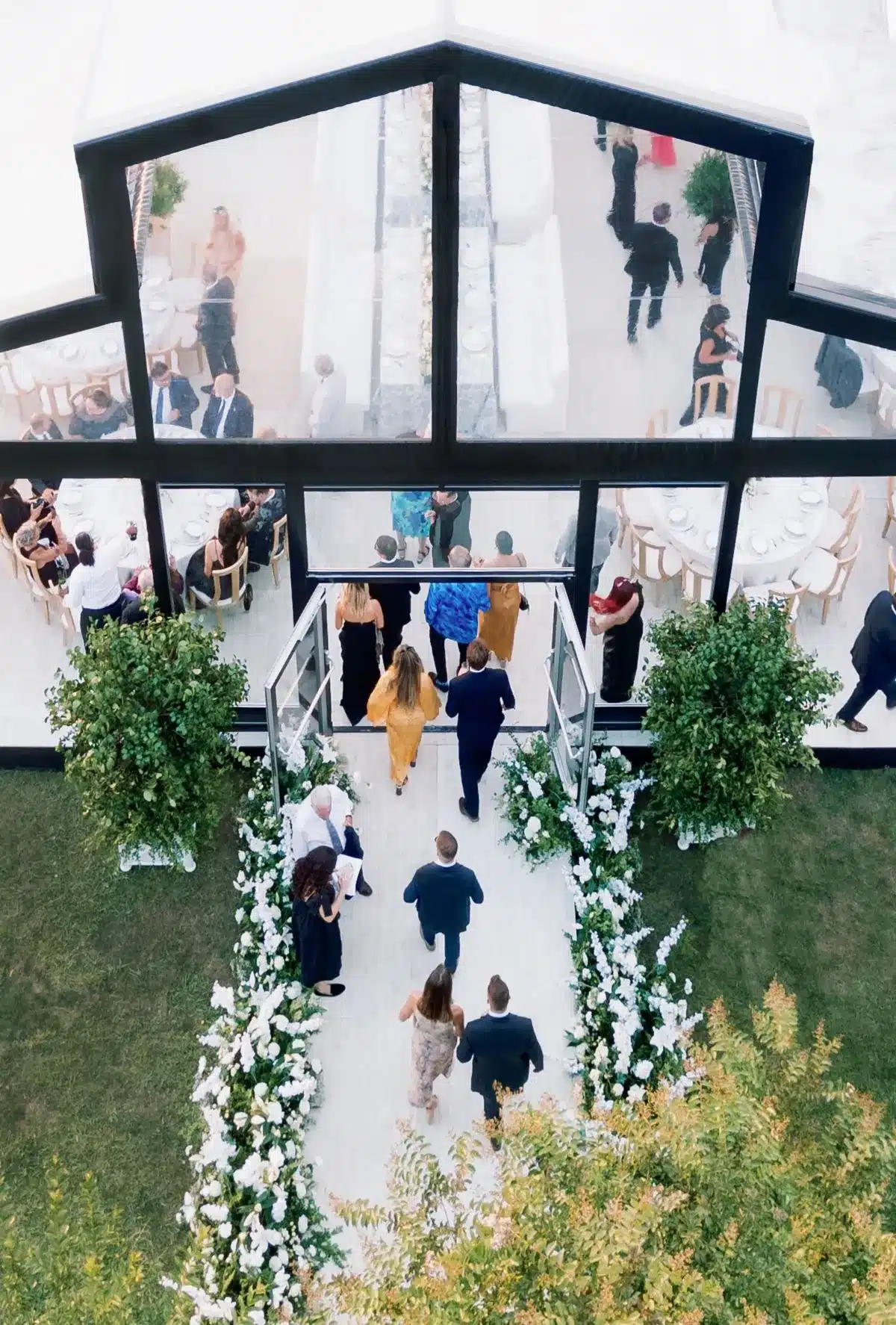Choosing the right tent is one of the most important decisions when planning an outdoor event. The structure you select affects not only the look and feel of your celebration but also how well it functions for guests, catering, and entertainment. Frame tents and pole tents are two of the most popular options, each offering unique advantages in terms of design, space, and installation. This guide will compare the two side by side, helping you decide which is the best fit for your wedding, corporate gathering, festival, or private celebration. With the right choice, and Skyline Tent Company’s expertise, your event will have both beauty and stability.
Key Takeaways
- Frame tents provide open interiors with no center poles, ideal for flexible layouts.
- Pole tents create elegant peaks and are best suited for grassy venues.
- Frame tents can be installed on hard surfaces like rooftops, patios, or parking lots.
- Pole tents are often more budget-friendly and quicker to set up on lawns.
- Frame tents offer superior wind resistance and customization options.
- The right choice depends on your venue surface, event style, and budget.
What Is a Frame Tent? Definition, Structure, and Key Features
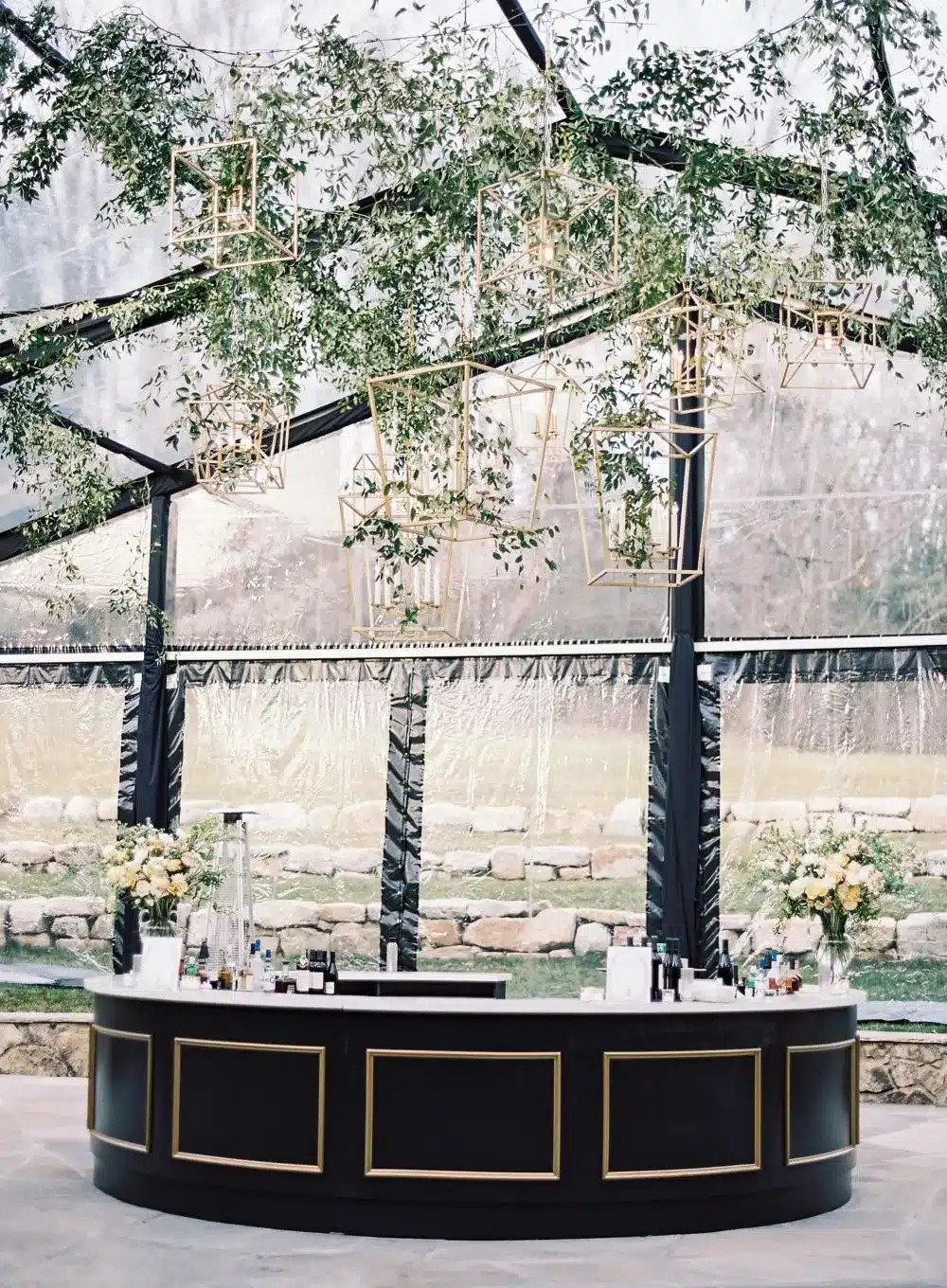
A frame tent is a versatile, self-supporting event structure built with an aluminum or steel framework that carries the weight of the canopy. Unlike pole tents, frame tents do not require center poles, which means you get an entirely open interior. This clear space is perfect for dance floors, dining layouts, and stage setups, giving planners complete freedom to design the event environment. Whether installed on grass, concrete, or even rooftops, frame tents provide dependable coverage and flexibility for gatherings of all sizes.
Key Features of Frame Tents
- Sturdy framework that allows installation on nearly any surface, including hardscapes and rooftops.
- Open, unobstructed interiors that maximize usable space for seating, décor, and entertainment.
- Durable vinyl canopies designed to resist UV rays and inclement weather.
- Customizable sidewalls and accessories that offer climate control, natural light, or a dramatic evening atmosphere.
- Reliable stability with strong wind-load ratings when properly anchored, making them suitable for exposed venues.
These qualities make frame tents an excellent option for upscale weddings, festivals, and corporate events in Charlottesville and beyond.
How Does the Framework Support a Frame Tent?
The strength of a frame tent lies in its interconnected beams. Instead of relying on ground stakes alone, the structure evenly distributes weight and wind loads across its framework. Anchors or ballast systems secure the tent in place, ensuring stability on surfaces like grass, asphalt, or concrete. This design keeps the fabric smooth and taut while maintaining the full open-space layout inside.
What Are the Main Advantages of Frame Tents?
Frame tents deliver a range of benefits that event planners in Charlottesville often look for:
- Unobstructed layouts for easy guest flow and clear sightlines.
- Hard-surface compatibility, perfect for patios, parking lots, and rooftops.
- Dependable performance in wind, offering peace of mind in unpredictable weather.
- Extensive customization with sidewalls, windows, draping, and lighting.
- A polished modern look that complements elegant or contemporary event themes.
These advantages make frame tents a go-to choice for both corporate gatherings and high-end social celebrations.
Which Events Are Ideal for Frame Tents?
Frame tents are well-suited for a wide variety of events in Charlottesville, including:
- Corporate galas and trade shows that require staging and exhibition areas.
- Rooftop receptions where a secure installation on hard surfaces is essential.
- Art exhibitions where unobstructed interiors highlight displays.
- Modern weddings with flexible layouts for décor and dance floors.
- Private dinners where climate control and intimate design enhance the guest experience.
How Can Frame Tents Be Customized?
Customization options allow frame tents to fit seamlessly into any event design:
- Draped ceilings and fabric treatments for a softer, elegant look.
- Clear or windowed sidewalls for panoramic views of Charlottesville’s scenery.
- Integrated climate control systems to keep guests comfortable year-round.
- Suspended lighting or truss systems for professional-quality ambiance.
- Branded graphics and panels for impactful corporate events.
With these options, a frame tent can be tailored to match both the logistics and style of any occasion.
What Is a Pole Tent? Definition, Structure, and Key Features
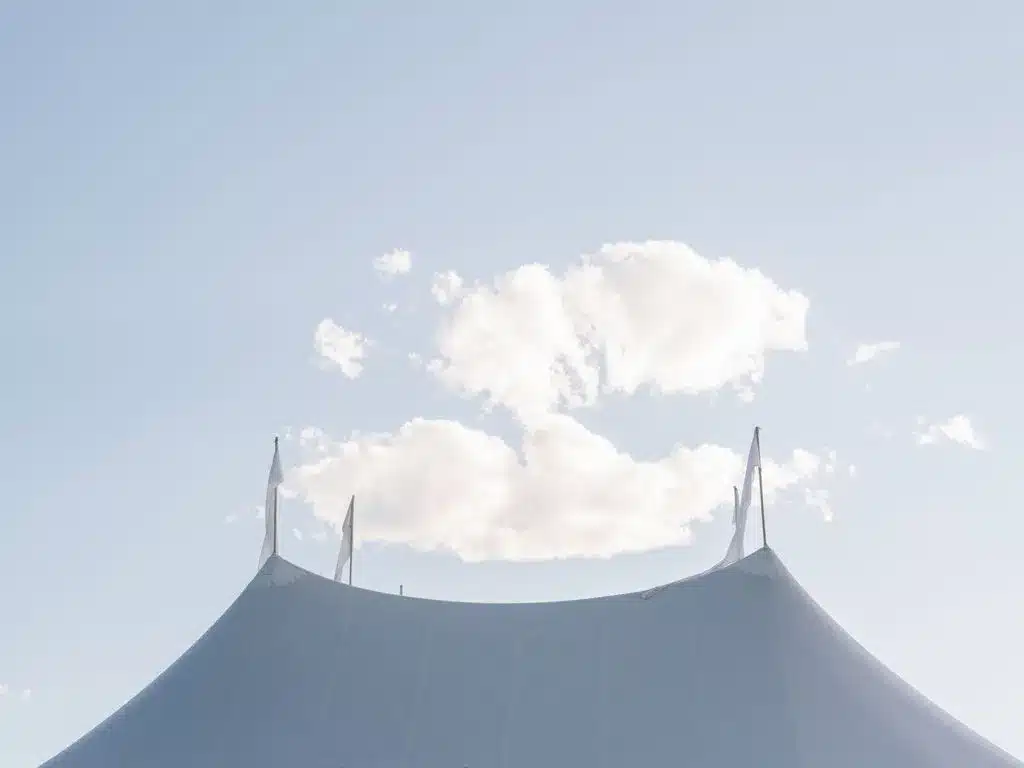
A pole tent utilizes a system of central and perimeter support poles, along with tensioned sidewalls staked firmly into the ground, to create elegant, peaked fabric spans. This tension-based structure relies on strategically placed guy lines and stakes to maintain its iconic silhouette, offering a classic, sophisticated aesthetic ideal for garden weddings and lively festivals.
The core components of a pole tent include:
- Central steel or wood poles that form the tent’s signature, graceful peaks.
- Perimeter poles that establish and maintain the tension across the canvas edges.
- Heavy-duty vinyl fabric, securely fastened by robust stakes and tensioned ropes.
- Guy lines that expertly distribute wind loads directly into the ground for enhanced stability.
- Sidewall options that allow for either open, airy configurations or fully enclosed, protected spaces.
These elements combine to deliver a traditional, charming look and represent a cost-effective solution for venues with grassy or soft ground surfaces.
How Do Central Poles and Stakes Support a Pole Tent?
The central poles are instrumental in lifting the tent’s ridge, while the secondary perimeter poles meticulously maintain tension along the edges. Stakes, driven deep into the soil, anchor both the perimeter and the crucial guy lines, effectively converting fabric tension into reliable structural stability. Proper staking depth and precise rope angles are essential to ensure the tent remains taut and secure under typical wind conditions, creating the elegant peaks that pole tents are celebrated for.
This tension-based mechanism forms the foundation for understanding the inherent strengths and potential limitations of pole tents in various environmental conditions.
What Are the Key Benefits of Pole Tents?
Pole tents provide several distinct advantages:
- Classic Peaked Silhouette – Enjoy a timeless elegance that is perfect for weddings and upscale garden affairs, offering a romantic and traditional ambiance.
- Cost-Effective Rental Rates – Generally offer lower material and installation expenses compared to frame tents, making them a budget-friendly option.
- Quick Setup on Grass – The staking process is straightforward and efficient on soft ground, allowing for faster installation.
- Ample Ventilation – Open eave designs promote excellent airflow, making them ideal for warm climates and daytime events.
- Photogenic Appeal – The dramatic, soaring peaks create a stunning visual element that beautifully frames outdoor backdrops for memorable photos.
These benefits highlight why pole tents remain a popular choice for ceremonies held under open skies and offer valuable guidance for aesthetic choices for event planners.
Which Events Are Best Suited for Pole Tents?
Pole tents truly shine at events such as:
- Traditional Weddings – Their romantic peaks and classic lawn installations create an idyllic setting.
- Garden Parties – They blend seamlessly with botanical surroundings, enhancing the natural beauty of the venue.
- Outdoor Fundraisers – Provide cost-efficient coverage for large guest counts, maximizing budget for the cause.
- Community Festivals – Offer flexible sizing options suitable for a variety of vendor booths and performance stages.
- Picnic-Style Receptions – Deliver casual elegance perfect for relaxed daytime gatherings.
These scenarios showcase the classic applications of pole tents, before we explore how they can be further enhanced through thoughtful décor and lighting choices.
How Can Pole Tents Enhance Event Aesthetics?
Pole tents can significantly elevate the ambiance of an event through various decorative touches:
- Adorning central poles with lush florals or elegant fabric draping for a touch of sophistication.
- Hanging stunning chandeliers from the ridge points to create a magical, glowing atmosphere after dark.
- Installing charming festoon lighting along guy lines to evoke a whimsical, starry-night effect.
- Utilizing custom printed sidewalls to reinforce branding or enhance the event’s specific theme.
- Incorporating seasonal décor that beautifully complements the natural surroundings of the venue.
By leveraging these creative enhancements, planners can achieve dramatic visual impact, beautifully merging tradition with personal style, which sets the stage for a direct comparison with frame tents.
How Do Frame Tents and Pole Tents Compare? Side-by-Side Feature Analysis
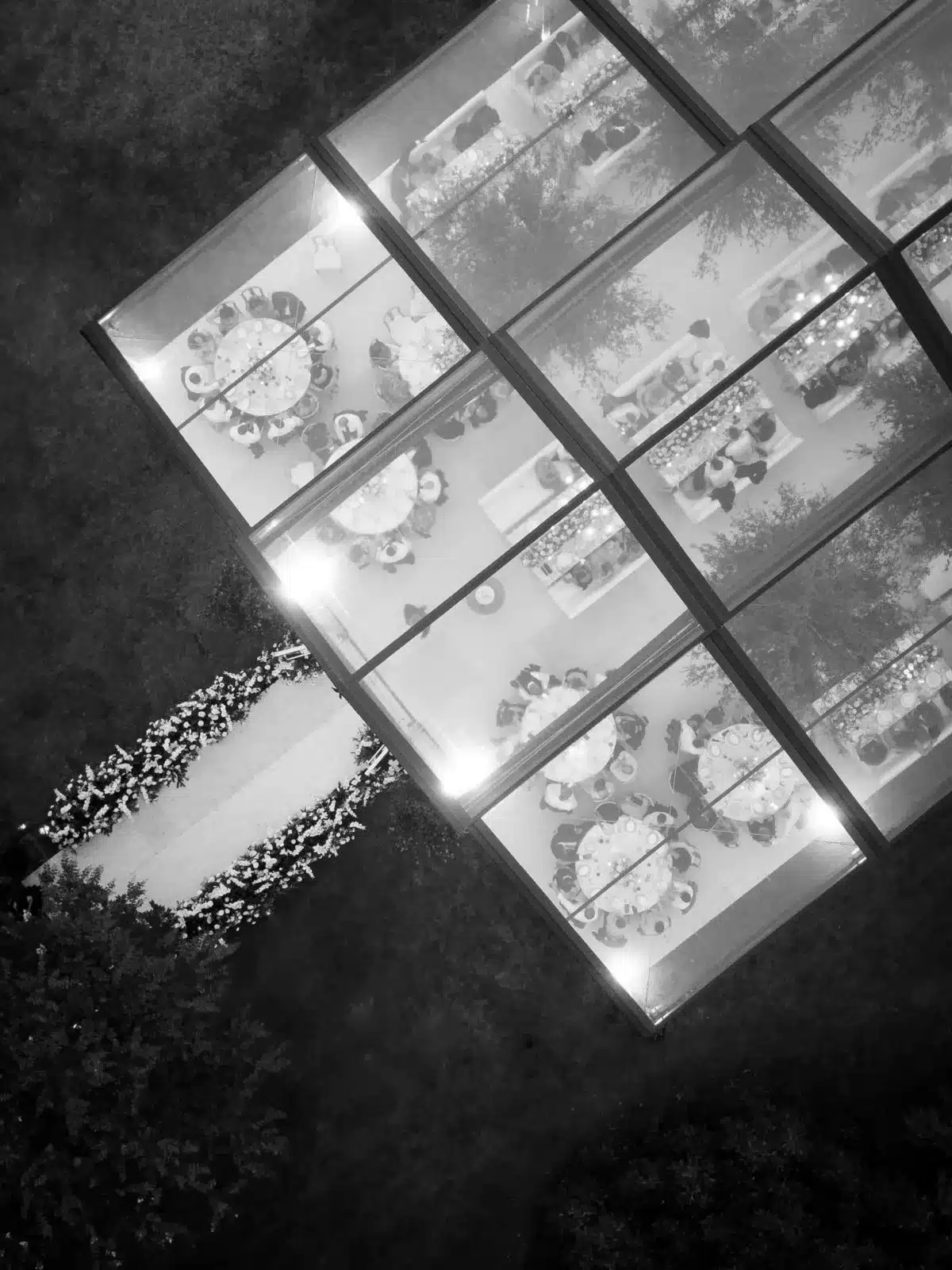
The following table provides a clear contrast between frame tents and pole tents across essential attributes, helping you pinpoint which structure best aligns with your event’s unique needs.
This detailed comparison clarifies how each tent type effectively supports different event requirements, leading into a discussion of more specific decision factors.
What Are the Differences in Structure and Interior Space?
Frame tents are engineered with a continuous metal skeleton that completely eliminates interior obstructions, thereby maximizing usable floor area. In contrast, pole tents rely on central poles that create their signature peaks but inherently limit layout options around these support points. This fundamental structural difference directly impacts the arrangement of tables, the size of dance floors, and the placement of stages. Understanding these spatial implications naturally leads into how venue surfaces significantly influence the choice of tent.
How Do Installation Surfaces Affect Tent Choice?
Frame tents offer remarkable versatility, adapting to virtually any surface through secure anchors or ballast systems. Pole tents, however, require soft soil to effectively drive stakes and secure guy lines. Consequently, venues with hard surfaces, such as parking lots and rooftop terraces, often necessitate the use of frame tents, whereas parks and grassy fields typically favor pole tents for their simplicity and cost-effectiveness.
Evaluating surface compatibility effectively sets the stage for discussing the implications for your budget.
What Are the Cost Differences Between Frame and Pole Tents?
Frame tent rentals and the specialized labor required for their assembly tend to result in higher overall costs, particularly when installation on hardscapes necessitates ballast systems. Pole tents generally achieve lower rates due to their simpler materials and more straightforward staking processes. However, it’s important to note that extensive customization with accessories, lighting, and sidewalls can narrow the price difference for larger-scale pole tent installations.
Balancing budgetary constraints with desired design elements is a key consideration that guides planners toward evaluating weather and durability requirements.
How Do Frame and Pole Tents Perform in Wind and Weather?
Frame tents provide exceptional wind resistance thanks to their robust, engineered framework, making them a highly reliable choice for locations prone to coastal breezes or elevated rooftops. Pole tents, while offering moderate stability, depend critically on correct staking patterns and precise tensioning of guy lines, requiring diligent monitoring in stronger gusts.
Assessing the specific durability needs for your event naturally leads into a discussion about installation complexity and timing.
What Are the Setup Time and Installation Complexity for Each Tent?
Frame tents require expert crews and specialized equipment to meticulously assemble their interconnected beams—a process that typically takes several hours. Pole tents, on the other hand, rely on staking and rope tensioning, allowing smaller teams to erect the structure more efficiently and often more quickly. Careful scheduling of labor and venue access windows is crucial for planners aiming to optimize installation workflows.
With the installation pros and cons clearly outlined, exploring tent selection based on specific event types becomes a more straightforward process.
Which Tent Is Best for Your Specific Event Type?
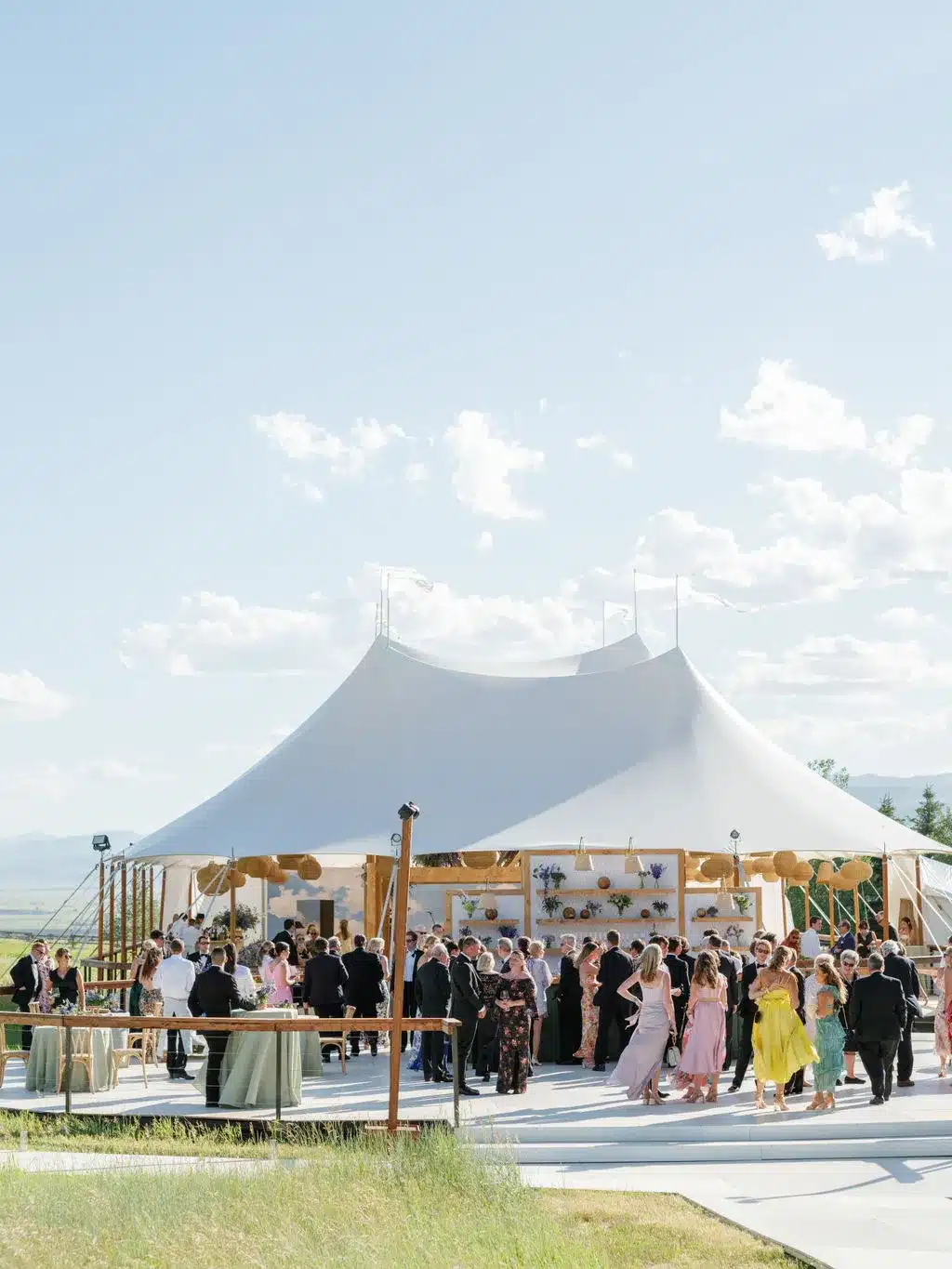
The decision between a frame tent and a pole tent ultimately hinges on factors such as the venue, anticipated guest count, expected weather conditions, and your overall design vision. The following recommendations align specific tent attributes with common event categories to guide your choice.
What Tent Should You Choose for Weddings: Frame or Pole?
For traditional outdoor ceremonies, pole tents are often the preferred choice due to their romantic peaked silhouettes and cost-effectiveness when installed on grass lawns.
Pole Tents for Traditional Weddings
Pole tents are frequently selected for traditional weddings, celebrated for their classic aesthetic and inherent suitability for picturesque outdoor settings. Their distinctive design, featuring prominent central and perimeter poles, cultivates a romantic and enchanting atmosphere, making them a highly popular choice for ceremonies and receptions held on expansive grassy lawns.
Conversely, modern receptions hosted on hard surfaces or city rooftops often benefit from the advantages of frame tents, which offer unobstructed dance floors and the option for climate control. Aligning your aesthetic goals with the specific site conditions is paramount to ensuring a seamless and memorable celebration.
Why Are Frame Tents Ideal for Corporate Events?
Frame tents project an image of professionalism with their clean, modern lines and highly flexible interiors, perfectly accommodating exhibition booths, stages, and sophisticated AV setups. Their superior wind resistance and compatibility with hard-surface installations make them an excellent choice for urban gala dinners and product launches where unwavering reliability is a critical requirement.
Frame Tents for Corporate Events
Frame tents are frequently favored for corporate events due to their remarkable adaptability to diverse installation surfaces and their capacity to seamlessly integrate branding and advanced AV equipment. Their clear-span interiors provide expansive, unobstructed space, which is exceptionally ideal for exhibition booths, presentation stages, and dynamic corporate presentations, solidifying their status as a practical choice for professional gatherings.
How Do Frame and Pole Tents Suit Large Festivals and Gatherings?
Pole tents offer a cost-effective solution for festivals, allowing exhibitors and food vendors to stake multiple smaller structures across grassy fields. Frame tents, on the other hand, provide large, open spans ideal for concert stages or VIP lounges, even on uneven terrain. Combining both tent types can create a dynamic and versatile festival footprint that effectively balances budget considerations with capacity needs.
What Tent Options Work Best for Niche Events Like Art Fairs or Charity Galas?
Art fairs greatly benefit from the open sightlines and integrated lighting trusses offered by frame tents, which effectively highlight displays. Charity garden galas, conversely, often embrace the classic peaks and swift installation capabilities of pole tents. Selecting the optimal tent for a specialized function ultimately hinges on prioritizing either unobstructed exhibition space or a more traditional outdoor ambiance.
Mapping specific event types to the inherent strengths of each tent type lays essential groundwork for developing a final decision-making framework.
What Factors Should You Consider When Choosing Between Frame and Pole Tents?
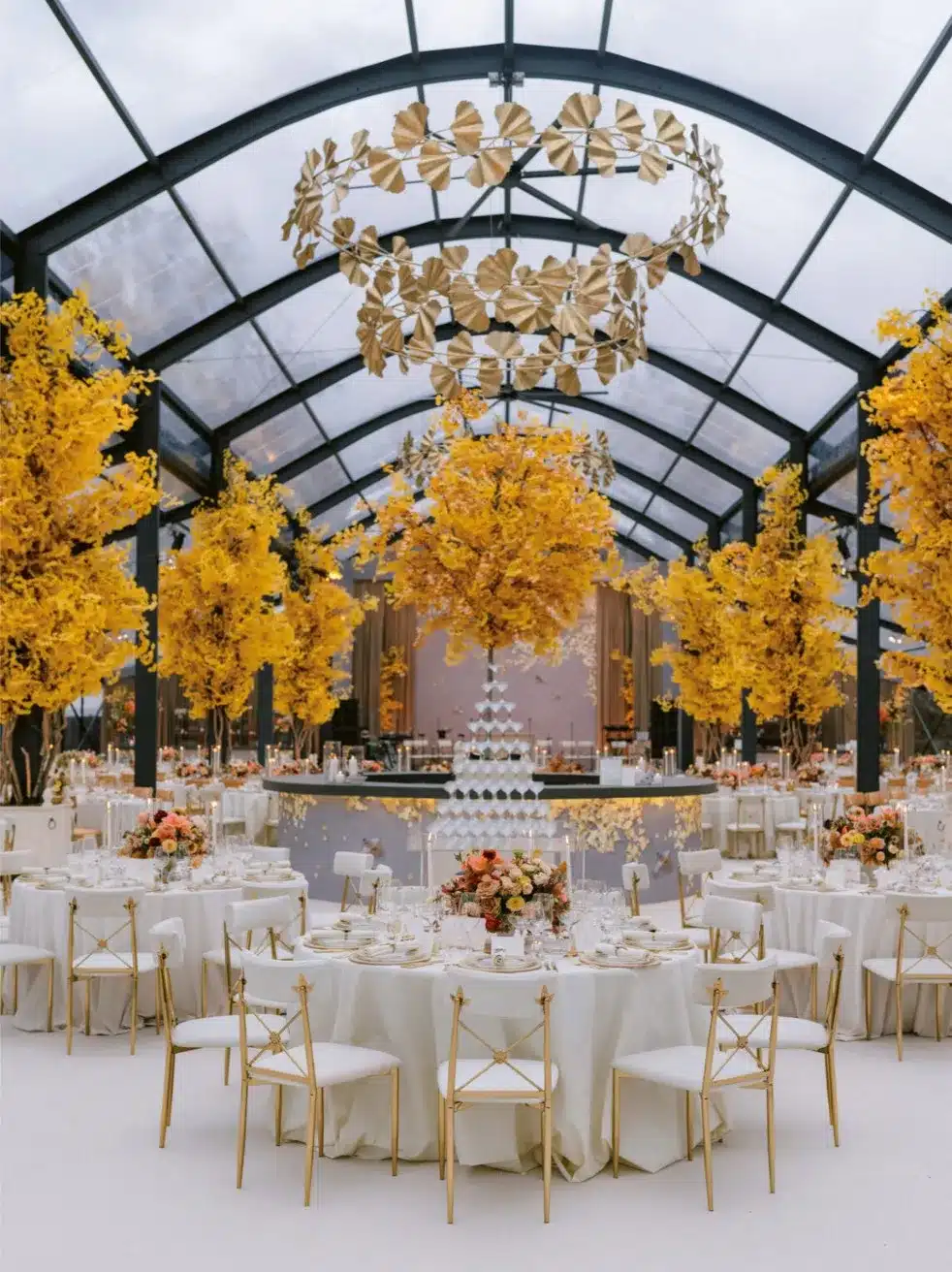
Several core factors play a crucial role in determining the optimal shelter solution for any given occasion.
How Does Venue Surface Compatibility Influence Tent Selection?
Soft grounds readily accommodate the staking required for pole tents, whereas concrete and asphalt surfaces necessitate the use of frame tents, which are anchored using ballast or specialized hardware. Assessing the venue’s surface type early in the planning process is vital to prevent last-minute logistical challenges and ensure full compliance with venue restrictions.
How Do Budget and Cost Impact Your Tent Choice?
Lower rental and labor rates often lead planners to favor pole tents; however, the need for extensive customization and climate control can potentially offset these initial savings. Frame tents typically involve higher upfront costs but deliver premium features that may well justify the investment for upscale events requiring a sophisticated presentation.
How Important Is Tent Aesthetic for Your Event?
Classic peaked silhouettes are perfectly suited for formal, traditional affairs, whereas the sleek, modern lines of frame tents complement contemporary designs and minimalist aesthetics. Aligning the structural style with your overall décor and branding goals is essential for ensuring visual cohesion from the ceremony through to the reception.
What Interior Layout Needs Affect Tent Type Suitability?
If open-plan layouts, elevated stages, or spacious dance floors are essential components of your event design, frame tents offer superior flexibility and space utilization. Pole tents require careful consideration of table and décor arrangements to work around the central poles, which can sometimes limit layout creativity for more complex floor plans.
How Do Weather Conditions and Durability Requirements Affect Tent Choice?
Frame tents are engineered to resist high winds and can support integrated HVAC systems, providing comfort during rain or heat. Pole tents perform adequately in mild conditions but demand meticulous staking and tensioning and may not be the best choice for highly exposed locations. Carefully evaluating meteorological forecasts and your tolerance for potential weather-related risks will guide your final selection.
Assessing these critical decision drivers thoroughly primes event planners to effectively coordinate installation details and ensure a flawless outcome.
How Can You Ensure a Smooth Tent Installation and Setup?
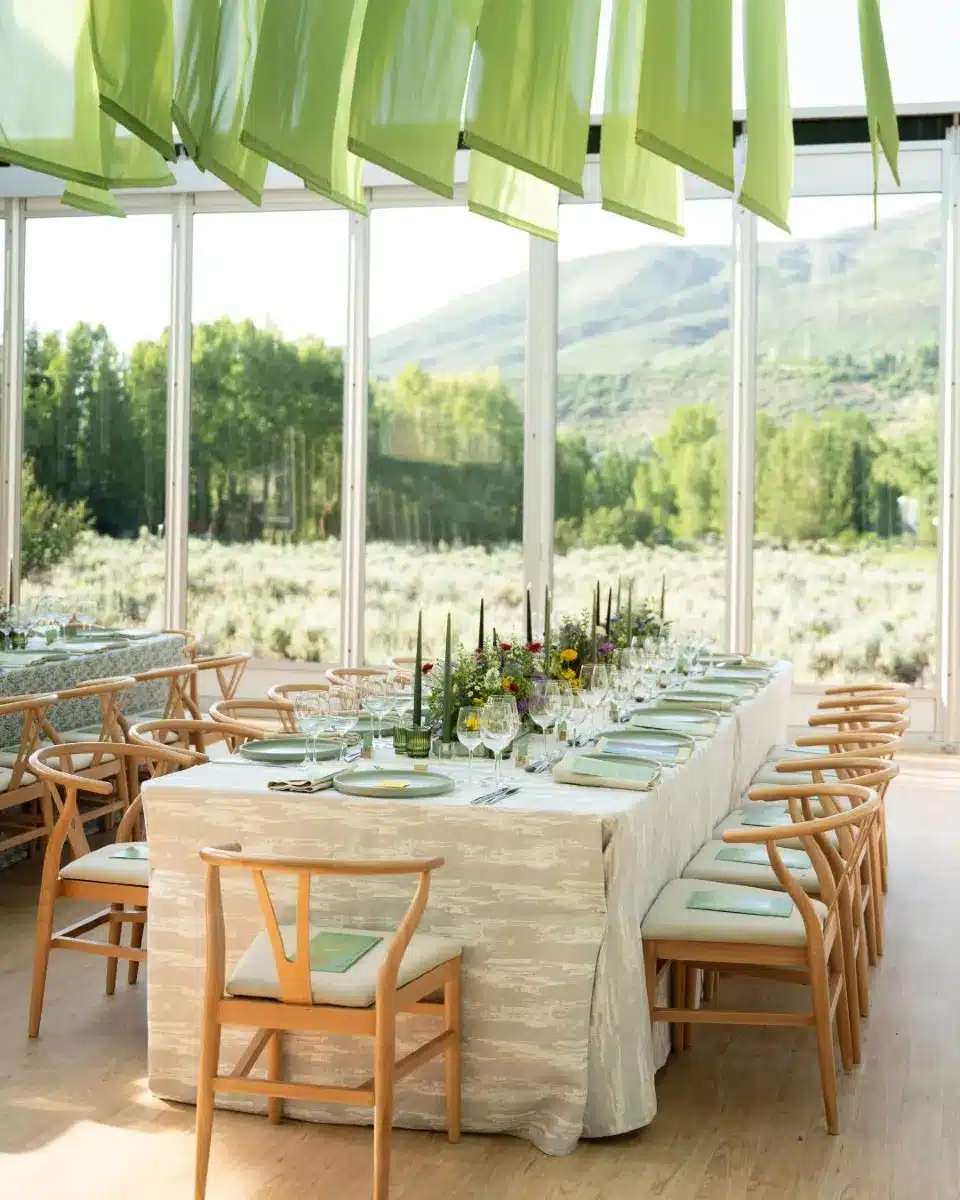
Professional expertise and meticulous site planning are paramount to preventing setup delays and ensuring the highest standards of safety.
What Are the Installation Requirements for Frame Tents?
Frame tents require level installation surfaces or carefully planned ballast setups, precise assembly of the interconnected frame components, and secure anchoring systems. Installation crews often utilize lifts or scaffolding for larger spans and strictly adhere to manufacturer load-rating specifications to maintain unwavering structural integrity.
What Are the Installation Requirements for Pole Tents?
Pole tent crews expertly stake perimeter poles and guy lines directly into the ground at precisely calibrated angles and depths. Thorough soil inspections are conducted to confirm that ground conditions are adequate to hold the stakes securely, and rope tension is meticulously adjusted to prevent fabric sagging or unwanted flapping in windy conditions.
How Does Surface Type Affect Tent Setup?
Grass and soil surfaces allow for straightforward staking of pole tents, though reinforcement mats may be necessary in high-traffic areas to prevent ground damage. Hard surfaces, such as concrete or asphalt, require the use of weight bags or concrete anchors for frame tents and may necessitate tighter scheduling for venue access and equipment staging.
What Professional Services Does Skyline Tent Company Provide for Tent Installation?
Skyline Tent Company offers comprehensive, end-to-end support, including detailed site surveys, custom layout planning, deployment of certified installers, and thorough post-setup inspections. Our highly skilled teams meticulously ensure that every pole, anchor, and drape is positioned perfectly for optimal safety, aesthetic appeal, and complete client satisfaction.
Detailing these essential requirements naturally transitions into addressing common questions regarding tent selection.
Frequently Asked Questions
What Is the Main Difference Between a Frame Tent and a Pole Tent?
Frame tents utilize a rigid metal framework to support the fabric, creating an open, pole-free interior, whereas pole tents rely on central and perimeter poles combined with staking to generate tension and their signature peaked appearance.
Which Tent Is Better for Windy Conditions?
Frame tents generally offer superior wind resistance due to their engineered, self-supporting framework, while pole tents depend heavily on meticulous staking and properly tensioned guy lines to withstand gusts effectively.
Which Tent Is More Cost-Effective?
Pole tents typically present lower rental and installation costs, as they require fewer materials and simpler labor. However, frame tents incur higher expenses for specialized assembly and ballast systems, though customization options can influence the final price for both types.
Can Frame Tents Be Set Up on Grass or Hard Surfaces?
Yes, frame tents are highly versatile and can be securely anchored on grass using ground anchors, as well as installed on hard surfaces like concrete or asphalt using ballast systems or specialized anchor kits.
Which Tent Is Better for Luxury Weddings?
Luxury weddings held on picturesque lawns often favor the romantic peaks of pole tents, while upscale receptions hosted on terraces or rooftops tend to lean towards frame tents for their climate control capabilities and unobstructed dance floor space.
Conclusion
Both frame tents and pole tents provide excellent solutions for outdoor events, but the right choice depends on your venue, budget, and design vision. Frame tents deliver strength, versatility, and a sleek modern look, while pole tents bring timeless charm and cost efficiency. By considering surface conditions, guest experience, and event style, you can confidently select the option that suits your celebration best. Skyline Tent Company offers expert guidance and professional installation to ensure your tent enhances the occasion from start to finish.

